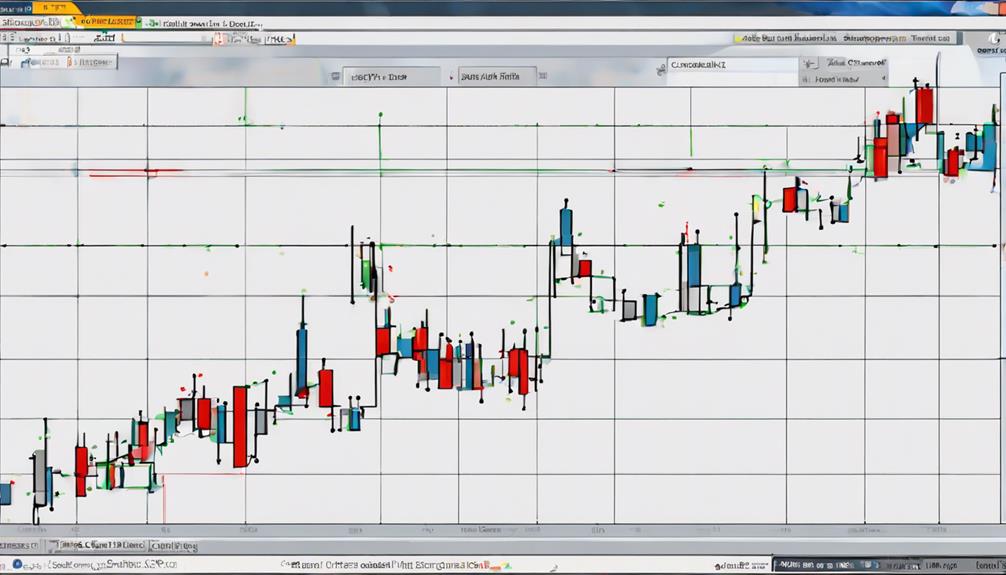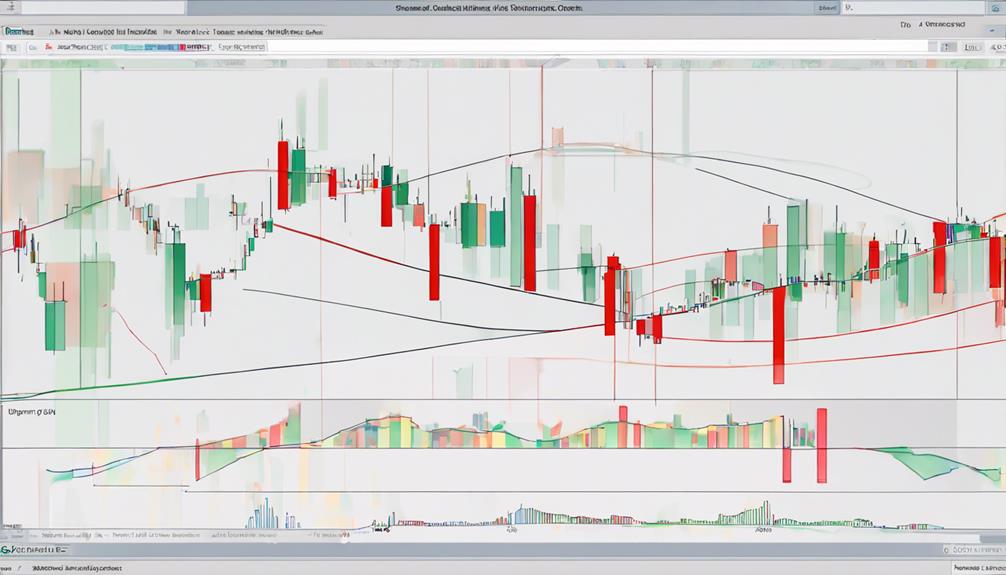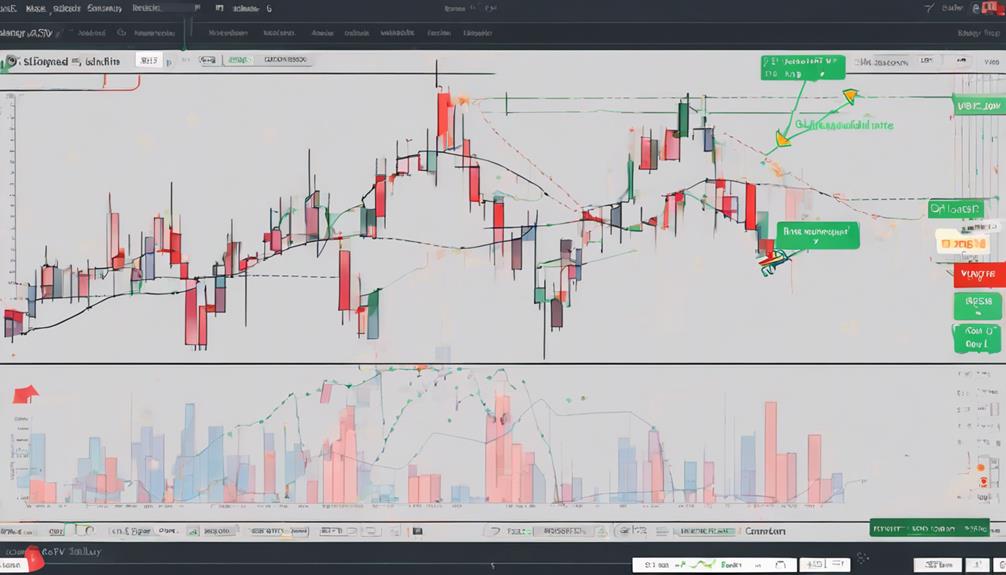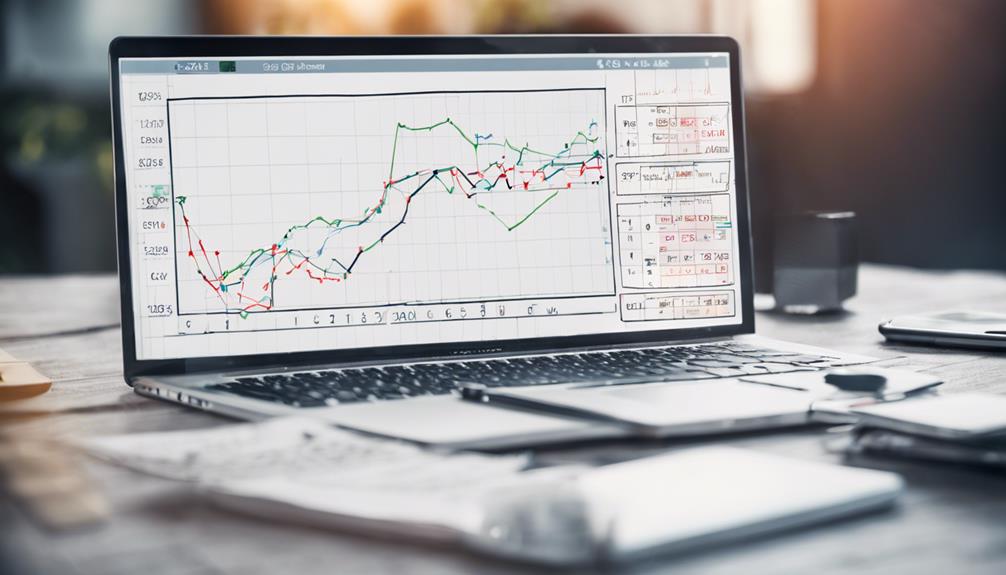In the fast-paced world of trading, having a reliable tool to gauge market trends can make all the difference.
The On-Balance Volume (OBV) indicator has stood the test of time, offering traders a unique perspective on market momentum.
By delving into the intricacies of OBV, traders can unlock valuable insights that may help them navigate through the complexities of the markets.
Understanding how to leverage OBV effectively can potentially lead to more informed trading decisions, but the key lies in mastering its nuances and applying it strategically.
Understanding On Balance Volume (OBV)
The concept of On Balance Volume (OBV) serves as a fundamental technical indicator that measures the flow of buying and selling pressure in the market based on volume. This indicator adds volume on days when the price closes higher than the previous day (indicating buying pressure) and subtracts volume on days when the price closes lower (indicating selling pressure).
By tracking the cumulative volume changes over time, OBV provides insights into market trends. Rather than focusing on the actual value of OBV, traders pay more attention to the direction in which it moves. When both price and OBV show higher peaks and troughs, it often suggests an upcoming upward trend in the market.
Traders can utilize OBV to identify potential trading range breakouts, trend stalls, and divergences, aiding in making informed trading decisions based on the flow of buying and selling pressure indicated by volume changes.
Interpreting OBV Trends

Analyzing the dynamics of On Balance Volume (OBV) trends offers traders valuable insights into market sentiment and potential price movements. The OBV indicator, which combines price and volume in a unique way, can help traders interpret market trends effectively.
Rising OBV during a trading range typically suggests accumulation of a particular asset, indicating a potential upward breakout. Conversely, falling OBV during a trading range often indicates distribution and the possibility of a downward breakout.
Moreover, observing divergence between price movements and OBV trends is crucial for making informed trading decisions. For instance, if the price is forming higher peaks while OBV fails to follow suit, it could signal a potential stall in an upward trend (negative divergence). On the other hand, if the price is creating lower troughs while OBV fails to do the same, it might suggest a potential stall in a downward trend (positive divergence).
Using OBV for Market Sentiment

Interpreting market sentiment through the use of On Balance Volume (OBV) involves tracking the flow of volume in and out of a security based on price changes, providing traders with valuable insights into investor attitudes towards a particular asset.
OBV, considered a technical analysis tool and a Balance Volume Indicator, helps traders assess market sentiment by observing the relationship between OBV and price movements. An increasing OBV typically indicates bullish sentiment, signaling more significant buying pressure. Conversely, a decreasing OBV suggests bearish sentiment with more selling pressure in the market.
Understanding these dynamics is crucial for traders seeking to interpret market trends accurately. By monitoring OBV, traders can anticipate potential price movements and shifts in market sentiment, enabling them to make informed decisions.
Ultimately, OBV serves as a valuable instrument for investors to gauge the prevailing sentiment in the market and adjust their strategies accordingly.
OBV Trading Strategies

Utilizing On Balance Volume (OBV) in trading requires strategic implementation of various techniques to capitalize on market trends effectively. One popular OBV trading strategy is the Divergence Strategy, which involves spotting inconsistencies between price movements and OBV to indicate potential shifts in momentum. Traders often use additional indicators to confirm signals generated by this strategy.
Another common approach is the Trend Confirmation Strategy, where traders analyze the correlation between price action and OBV to validate trends and assess their strength. Divergences are also utilized in this strategy for further validation.
Additionally, the Breakout Strategy focuses on monitoring OBV volume surges to confirm the strength of breakouts, waiting for confirmation signals before making trading decisions. Moreover, the simplicity of OBV makes it easy to interpret, appealing to traders of all levels. Its customizable nature allows traders to adjust settings according to their preferences and trading styles, enhancing its versatility in different market conditions.
Advantages and Limitations of OBV

OBV presents traders with a straightforward yet effective tool for gauging market trends, offering distinct advantages and limitations that influence its utility in trading strategies.
The indicator's simple calculation formula and diverse signals provide traders with accurate signals in medium-term timeframes, enabling them to make informed trading decisions based on actual volume changes. OBV's ability to offer early signals with a short time lag enhances its reliability, allowing traders to act promptly.
However, limitations arise when using OBV on low-liquid assets or timeframes less than M15, potentially impacting the precision of its predictions. To maintain the indicator's effectiveness, traders should be cautious in such scenarios to ensure the accuracy of their trading decisions.
Understanding both the advantages and limitations of OBV is crucial for traders looking to leverage its precision in analyzing market trends and making informed trading choices.
How Can On Balance Volume Help Determine Market Trends in Day Trading?
On Balance Volume (OBV) is a useful indicator for day trading on balance volume. It measures buying and selling pressure to determine the strength of a price trend. A rising OBV indicates bullish momentum, while a falling OBV suggests bearish sentiment. Day traders can use OBV to confirm market trends and make informed trading decisions.
Frequently Asked Questions
How Do You Use the On-Balance Volume Indicator?
The On-Balance Volume (OBV) indicator gauges buying and selling pressure by tracking volume changes on up and down days. It helps identify potential market trends, accumulation, distribution, and divergence. Traders use OBV to anticipate market movements and make informed decisions.
What Is the Best Time Frame for OBV Indicator?
The best time frame for the OBV indicator is crucial for accurate trend identification and analysis. Tailoring the time frame to one's trading style and goals is imperative. Aligning the OBV time frame with trading strategy optimizes results.
What Is the Trading Strategy of Obv?
The trading strategy of On Balance Volume (OBV) involves analyzing volume changes to gauge buying and selling pressure. It helps confirm trends by comparing price movements with volume flow, identifying potential reversals or breakout strengths.
How Do You Use OBV for Swing Trading?
In swing trading, On Balance Volume (OBV) is utilized to identify potential trend reversals by analyzing divergences between price and OBV. This tool confirms trend strength, helps pinpoint entry/exit points, and assesses market buying/selling pressure.
Conclusion
In conclusion, the On-Balance Volume (OBV) indicator offers valuable insights into market trends and can help traders anticipate major price movements. By analyzing volume flow and comparing it with price bars, OBV provides actionable signals for making informed trading decisions.
While OBV has its advantages in predicting market sentiment, it also comes with limitations that traders should be aware of. Overall, mastering the use of OBV can greatly enhance one's ability to navigate the complexities of the financial markets.
